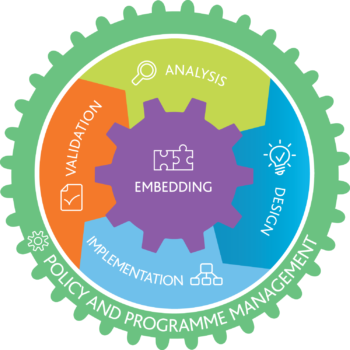Business Continuity
Preparing for unexpected interruptions
How we can help you
Our senior consultants are not only certified, but also have decades of professional practical experience, working in a variety of organisations to prepare plans that make sense. We believe that a good plan of just a few pages works much better than a bulky 150 page plan that nobody reads.
Planning for the Un-Expected
Because the likelihood of something very unlikely happening, is very likely.
It is impossible to predict tomorrow’s crisis. No-one expected Fukushima, where an earth quake was followed by a tsunami, which hit a nuclear power station. Or exceptional typhoons such as Hato or Mangkhut. Or 9/11. Or a common sprinkler installation causing a flood. Or SARS. Or the umbrella movement occupation of HK Central. Or your lifts breaking down. Or a global pandemic. Yet, such things happen. BCM is not about predicting the next crisis, but about being prepared for the consequences.
We can help you with that: Simple, generic plans for an outage of your production means. For example:

Building
Fire, earthquake, legionnaires disease, power outage, lonely shooter, invacuation, elevator breakdown, riots, terrorism, typhoon damage, anthrax scare, airco failure, etc

People
Pandemics, strike, staff poaching, infectious disease, insider criminality, family care, nuclear scare, rogue staff, tsunami, etc

IT Technology
Computer crash, cyber attacks, datacenter failure, router issues, network failure, server crash, easter eggs, rogue it staff, etc

Vendors
Market data suppliers, logistics services, IT software or hardware suppliers, outsourced partners, archive services, white label services, call centers, etc.

Our approach is based on ISO22301 and inspired by the BCM Good Practices Guidelines (GPG2018), from the Business Continuity Institute (BCI).
This BCM process guides organizations in identifying threats, designing responses, implementing a plan and measuring effectiveness. It’s an ongoing lifecycle to continually build and improve organizational resilience.
What we really like to give our clients:
- Short, concise documents with useful information;
- Solutions that make business sense for YOUR organisation;
- Peace-of-mind, knowing you are ready for the unexpected;
- Peace-of-mind, knowing what you know, and knowing what you don’t know.
The BCI Good Practice Guidelines
Business Continuity Lifecycle
01
Analysis
Analysis is the stage of the BCM Lifecycle where we review and assess your organization to identify its objectives, how it functions, and the constraints of its operating environment. The main technique used to analyse the organization is the Business Impact Analysis (BIA). A risk and threat assessment is also undertaken at this stage.
02
Design
In the Design stage of the BCM Lifecycle, we help you identify and select solutions to ensure adequate continuity can be achieved during disruption.
03
Implementation
Implementation is the stage where we implement the solutions agreed in the Design stage, by establishing a response structure and developing plans. Business continuity plans include details of the priorities, procedures, responsibilities and resources required to manage an incident and return the organization to pre-agreed acceptable levels within the planned time frames.
04
Validation
Validation is the stage of the BCM Lifecycle where we confirm the BC programme meets the objectives of the policy and that the plans in place are effective. The goal is continual improvement of the programme and an enhanced level of organizational resilience.
05
Embedding
Embedding is where we help you develop a program to integrate business continuity practice into business as usual activities and organizational culture.
06
Policy & Program management
Policy and Programme Management is the part of the BCM Lifecycle that establishes your organization’s policy relating to business continuity and defines how it should be implemented, through an ongoing cycle of activities within the business continuity programme.
When disaster strikes
In your office
You’ll be ready for it
We can advise on Business Continuity solutions to be implemented, and how to do this in the most cost-effective way. We also know most of the service vendors, and which of their products would be beneficial to you.
For example: Work Area Recovery (WAR) is the name of temporary workspace that can be used whenever the normal office is inaccessible or destroyed. For industries where interruptions have high impact, and the technical lead-time of setting up desktop equipment is long (such as in financial markets), it makes sense to prepare a WAR site that is dedicated, fully configured and immediately available. In other cases, non-dedicated “cold” sites or even a shared site may suffice, where it is okay to take a few hours to set up.
As low-cost alternative, companies often rely on Work From Home (WFH) solutions. However, imagine working from home for a prolonged period of time, with your youngest seeking attention, your dog wanting to play, your loved one needing help with errants, and many other domestic distractions. Especially in Hong Kong, where domestic housing is notoriously cramped, WFH should be carefully considered.
Our specialists can advise on all different solutions.
